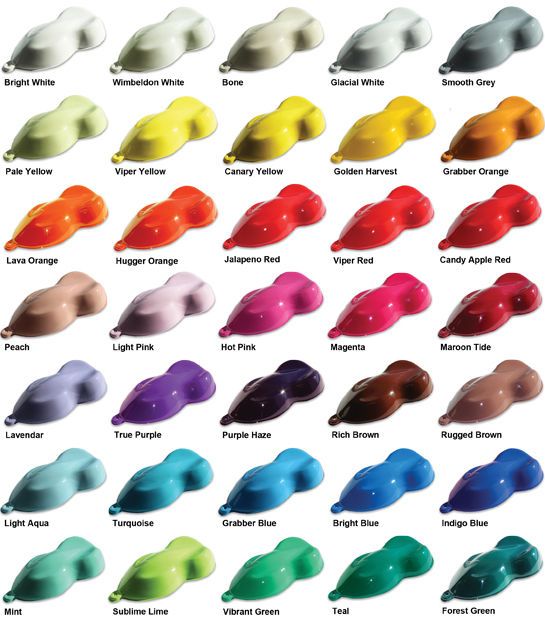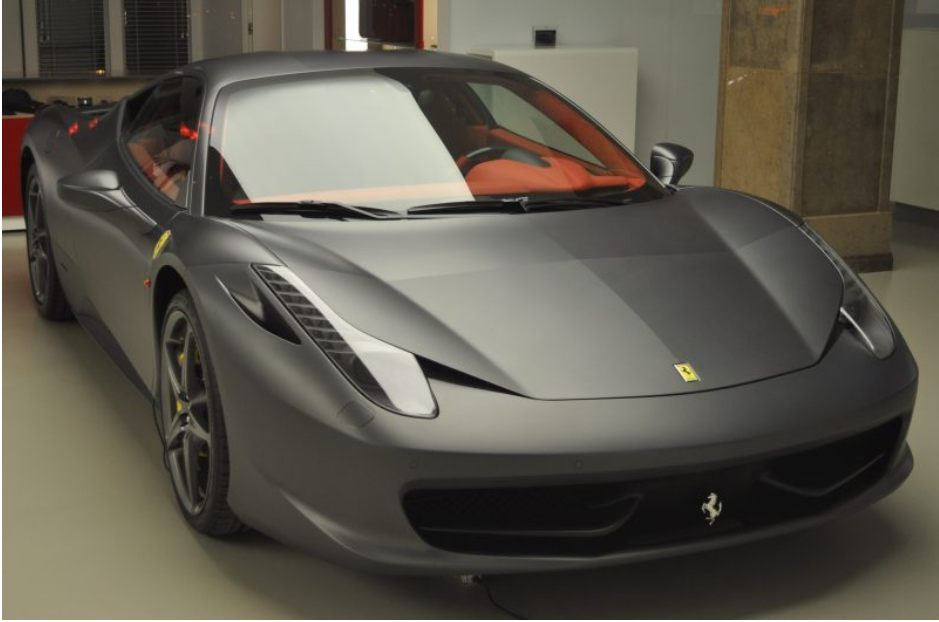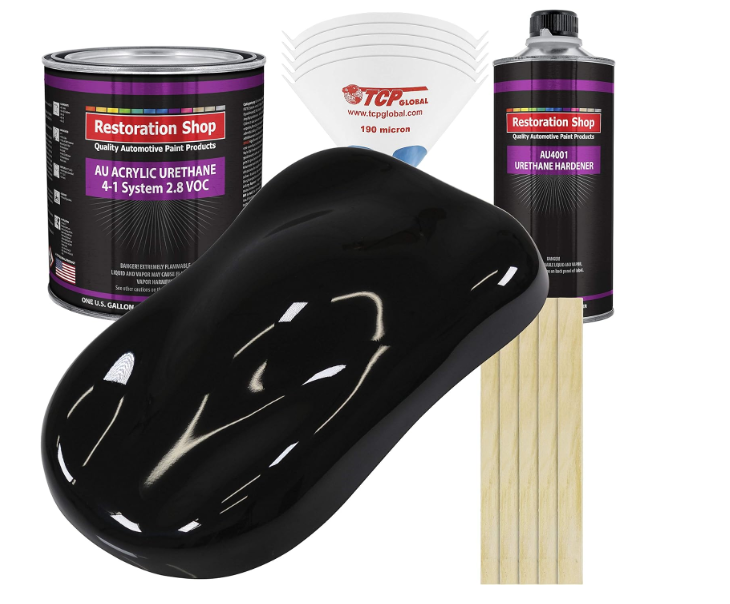Are you pondering the age-old question Which type of paint is applied to cars? Look no further for a comprehensive guide to automotive painting. Choosing the right paint for your vehicle is a crucial decision, impacting both its aesthetic appeal and long-term durability.
In this informative exploration, we will delve into the diverse world of automotive paints, covering types, finishes, and essential considerations. Whether you’re a seasoned car enthusiast or a first-time car owner, understanding the nuances of car paint is essential for maintaining that showroom shine.
Join us as we unravel the mysteries behind the perfect coat, ensuring your ride stands out on the road. What kind of paint is used over cars? Let’s uncover the answers together.
Which type of paint is applied to cars?
Cars are typically coated with automotive paint.
There are several different types of car paint available, each with its own unique properties and benefits. The best type of paint for your project will depend on your specific needs and preferences.
- Solid Paint
- Metallic Paint
- Pearlescent Paint
- Matte Paint
- Urethane Paint
- Waterborne Paint
Solid Paint:
Solid paint stands out as the most prevalent type of car paint. This single-stage paint is directly applied to the car’s body, making it a cost-effective and user-friendly option. However, it comes with trade-offs, as solid paint is the least durable among its counterparts.

Its susceptibility to fading and chipping should be considered, requiring owners to weigh the benefits of affordability against the need for long-term resilience.
Metallic Paint:
In contrast to solid paint, metallic paint introduces tiny metal flakes, imparting a captivating shimmer to the finish. This type of paint offers enhanced durability compared to solid options and exhibits greater resistance to fading.

While the metallic effect adds a touch of sophistication, it comes at a higher price point and demands a more intricate application process. Balancing the allure of a metallic finish with the intricacies of cost and application difficulty is essential for those seeking a distinctive and enduring automotive aesthetic.
Pearlescent Paint:
Distinguished by the inclusion of minute mica flakes, pearlescent paint imparts a captivating and iridescent appearance to the vehicle’s surface. While this type of paint commands a higher price point and presents challenges in application, it stands out as the epitome of durability and fade resistance within the realm of car paints.

The unique pearlescent effect adds a touch of luxury, making it a coveted choice for automotive enthusiasts seeking a distinctive and long-lasting aesthetic. When considering pearlescent paint, the investment in both cost and application intricacy is rewarded with a stunning and enduring finish that elevates the overall appeal of the vehicle.
Matte Paint:
Matte paint, characterized by its flat and non-reflective finish, is gaining popularity for its contemporary and sophisticated aesthetic appeal. While it imparts a modern edge to cars, matte paint demands careful consideration due to its unique maintenance challenges.

Notably, it is the most difficult type of paint to sustain, being more susceptible to scratches and fingerprints. Owners of matte-painted vehicles must invest in specialized cleaning products to preserve the integrity of the finish.
Despite the maintenance demands, the allure of a sleek matte appearance continues to draw enthusiasts seeking a cutting-edge and distinctive look for their vehicles.
Urethane Paint:
Urethane paint, a sophisticated two-stage paint utilized predominantly on high-end vehicles, stands out for its exceptional durability and fade resistance.
This type of paint offers a long-lasting, high-quality finish, making it a preferred choice for automotive enthusiasts seeking the utmost in performance and aesthetics. However, the premium features of urethane paint come at a cost, as it ranks as the most expensive type of car paint.

Moreover, its application requires a level of skill and precision, making it the most challenging paint type to apply. The investment in urethane paint promises a resilient and visually stunning result, catering to those who prioritize both performance and a flawless exterior for their cherished vehicles.
Waterborne Paint:
Distinguished by its composition using water instead of solvents, waterborne paint emerges as a notably eco-friendly alternative to traditional solvent-based counterparts. The environmental benefits of waterborne paint extend beyond its reduced ecological footprint, as it is also less flammable and boasts a more straightforward application process compared to solvent-based paints.

Despite these advantages, it’s essential to consider trade-offs, as waterborne paint may not match the durability of solvent-based options and may exhibit increased susceptibility to chipping.
Balancing environmental consciousness with performance expectations is key for those opting for waterborne paint, as it represents a conscientious choice catering to both the well-being of the planet and the ease of application.
Choosing the Right Type of Car Paint
The best type of car paint for your project will depend on your specific needs and preferences. If you are on a budget, solid paint is a good option. If you are looking for a more durable paint, metallic or pearlescent paint is a better choice.
If you want the most durable and fade-resistant paint, urethane paint is the best option. However, urethane paint is also the most expensive and most difficult to apply. If you are concerned about the environment, waterborne paint is a good option.
However, waterborne paint is not as durable as solvent-based paints.
Here is a table that summarizes the different types of car paint and their pros and cons:
| Type of Paint | Pros | Cons |
| Solid | Inexpensive, easy to apply | Less durable, more susceptible to fading and chipping |
| Metallic | More durable, less susceptible to fading | More expensive, more difficult to apply |
| Pearlescent | Most durable, fade-resistant | Most expensive, most difficult to apply |
| Matte | Modern, sophisticated look | Difficult to maintain, susceptible to scratches and fingerprints |
| Urethane | Very durable, fade-resistant | Most expensive, most difficult to apply |
| Waterborne | Environmentally friendly, less flammable, easier to apply | Not as durable as solvent-based paints, more susceptible to chipping |
Conclusion
The coating of cars with automotive paint is a fundamental aspect that not only enhances their aesthetic appeal but also plays a crucial role in protecting them from environmental factors.
The diverse types of car paint, ranging from solid and metallic to pearlescent, matte, urethane, and waterborne, offer a spectrum of choices for vehicle owners, each with its unique characteristics and considerations.
Whether prioritizing durability, visual impact, or environmental friendliness, the selection of the right automotive paint becomes a personalized decision. Ultimately, as technology advances and preferences evolve, the world of car paint continues to evolve, providing enthusiasts with innovative options to make their vehicles stand out on the road.

I’m Farhan Hakeem, a passionate automotive enthusiast and the driving force behind . With a deep-rooted love for cars and an unquenchable curiosity about the world of automobiles, I’ve embarked on a journey to share my insights, experiences, and opinions through this platform.
From a young age, the mesmerizing blend of artistry and engineering that cars embody captivated my imagination. Over the years, I’ve honed my understanding of automotive technology, design, and trends, which I now channel into creating engaging and informative content.
